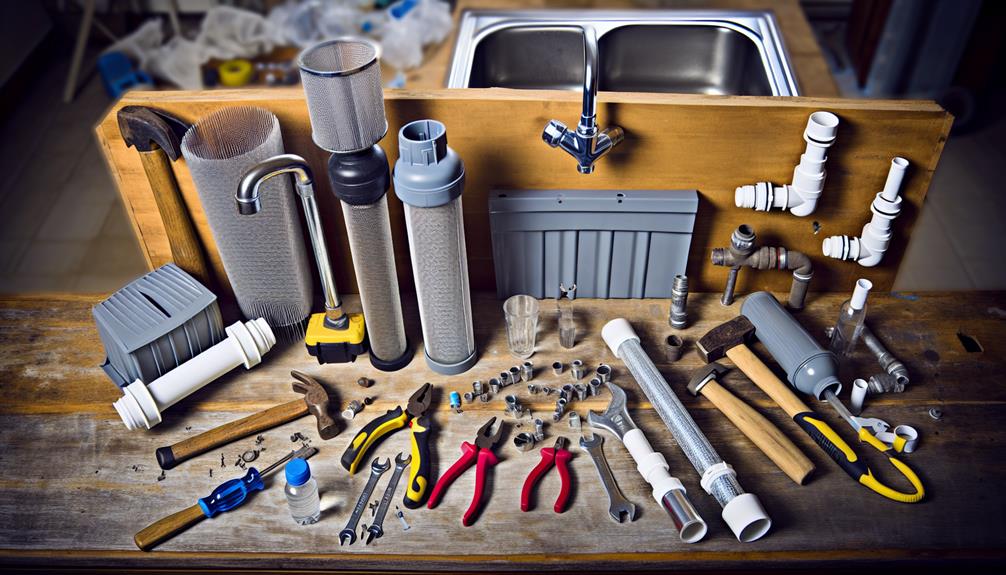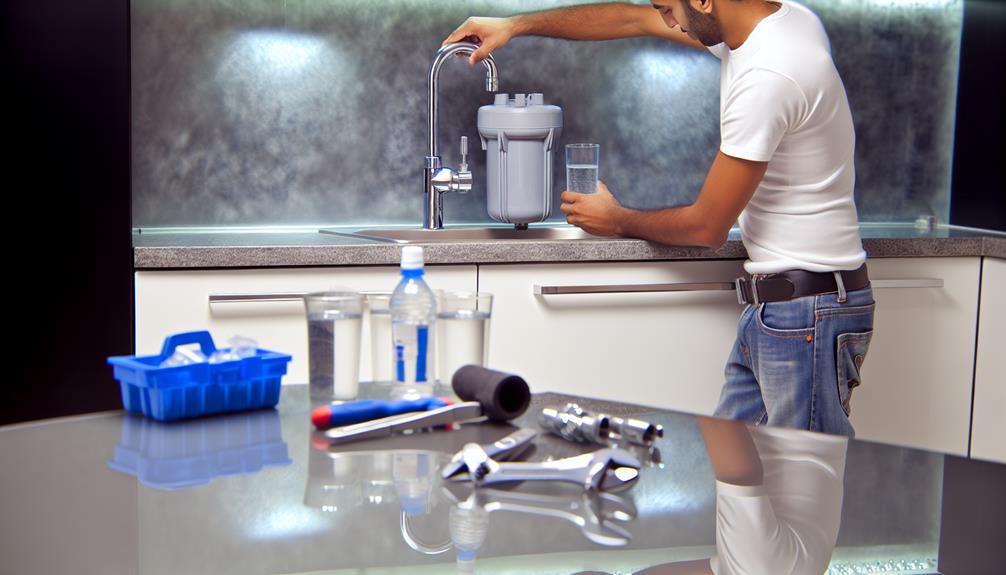You've likely heard of communities like Flint, Michigan, where residents faced a water crisis that brought the importance of clean drinking water into sharp focus. In your own home, you've taken steps to ensure your water's purity by investing in a reverse osmosis (RO) system.
But like any sophisticated filtration method, your RO system demands regular maintenance to function effectively. You're responsible for replacing filters and membranes at the right intervals, sanitizing the system to prevent bacterial growth, and staying vigilant for any leaks or damages that could compromise water quality.
As you consider the longevity and performance of your system, you might wonder what specific actions you need to take and when. The answer lies in a deeper understanding of the intricate workings of your RO system, which we'll explore together, uncovering the nuances that can make all the difference in your water's purity and taste.
Understanding Reverse Osmosis Systems
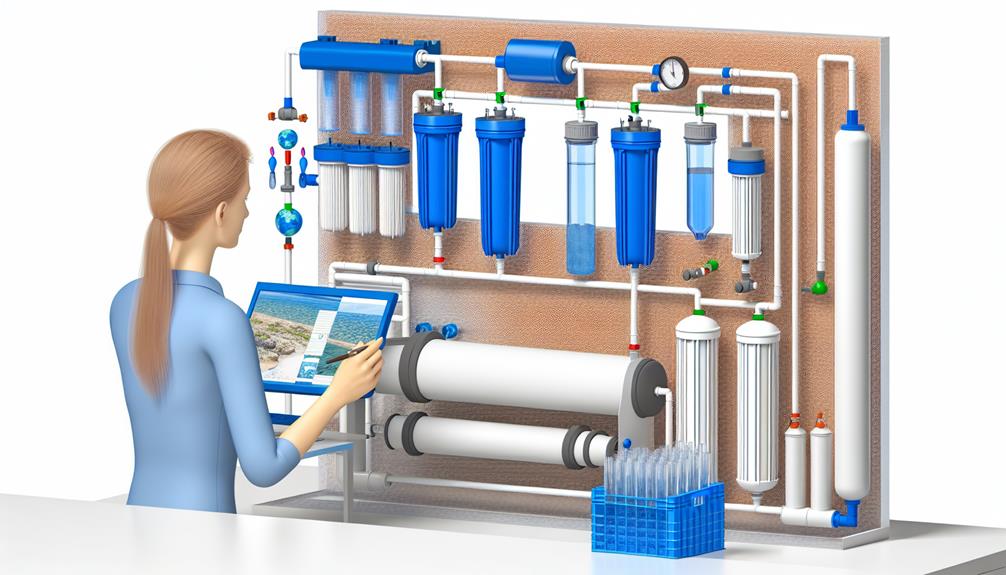
To effectively maintain a reverse osmosis system, it's crucial to first understand how this advanced filtration process operates to purify your water. At the core of the system lies the semi-permeable membrane, which is designed to allow only water molecules to pass through while rejecting larger contaminants like salts, bacteria, and chemicals.
Water pressure plays a pivotal role in this process, as it propels the water against the membrane, facilitating the separation of impurities. The pressure must be sufficiently high to overcome the natural osmotic pressure that would otherwise draw water back towards the concentration of contaminants. The efficiency of membrane functionality hinges on this pressurization; without it, the system can't perform optimally.
Maintaining consistent water pressure isn't only essential for the reduction of dissolved solids but also for preventing premature membrane fouling. It's vital to monitor the system's pressure gauges and ensure that pressures are within the manufacturer's recommended range to maintain peak performance.
Regular inspection of the membrane is equally critical. You'll want to check for any signs of wear or damage that could compromise its integrity. A compromised membrane can lead to decreased water quality and could ultimately render the system ineffective. Therefore, understanding and maintaining these key components—water pressure and membrane functionality—are the first steps in ensuring the longevity and efficiency of your reverse osmosis system.
Regular Filter Replacement Schedule
Understanding the importance of water pressure and membrane integrity in your reverse osmosis system, it's equally crucial to adhere to a regular filter replacement schedule to ensure continued high-quality water purification. Filter lifespan varies, but there are common replacement indicators you should watch for:
- Sediment Pre-Filter:
- Typically replaced every 6-12 months.
- Protects the RO membrane by trapping particulates.
- *Signs of needed replacement:* Visible sediment, decreased water flow.
- Carbon Pre-Filter:
- Generally lasts 6-12 months.
- Removes chlorine and organic compounds.
- *Indicators:* Unusual taste or odor in water.
- RO Membrane:
- Should be replaced every 2-3 years.
- Central to the RO process, selectively allows water through while rejecting contaminants.
- *Key replacement indicators:* Drop in water quality, reduced production rate.
Don't wait for complete failure to replace these components. Proactive maintenance won't only preserve the quality of your water but also protect the system from damage. Adhering to this schedule, you'll prevent issues related to clogged or worn-out filters, ensuring your reverse osmosis system operates efficiently. Remember, your system's performance is only as good as the condition of its filters.
Sanitizing the RO System
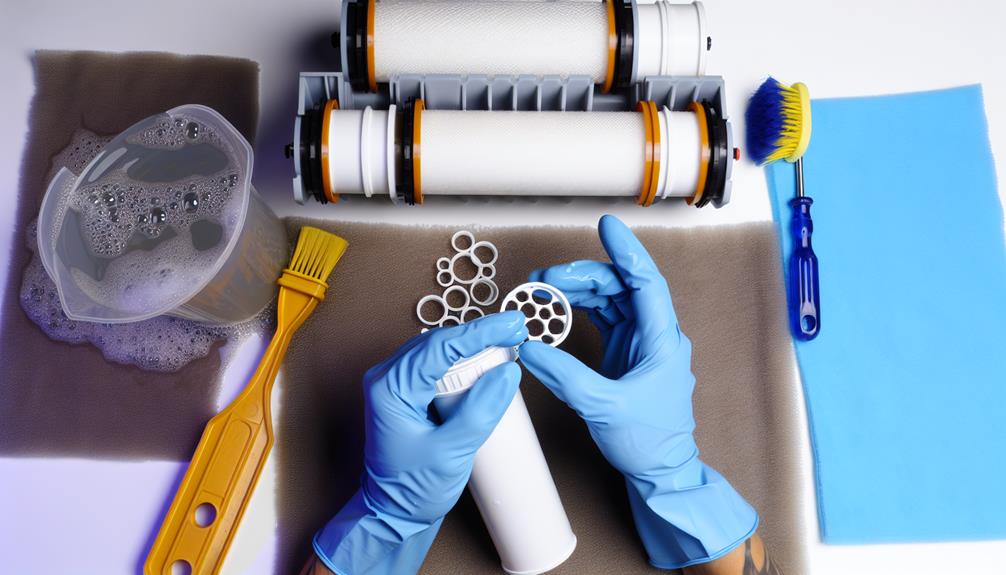
While replacing filters is a key aspect of maintenance, regularly sanitizing your reverse osmosis system is essential for preventing microbial growth and ensuring the safety of your water supply. Microbial control within your system is vital to maintaining the quality of the water produced. To effectively sanitize your RO system, follow a systematic approach that begins with turning off the water supply and draining the system.
Here's a table outlining the steps and components involved in the sanitization process:
| Step | Component |
|---|---|
| 1 | Shut off valve |
| 2 | Storage tank |
| 3 | Filter housings |
| 4 | RO membrane |
Sanitation frequency should be aligned with filter changes, typically every 6 to 12 months, to ensure comprehensive maintenance. During the process, it's important to properly clean or replace pre-filters and post-filters. Carefully remove the RO membrane, if applicable, and replace it after the system has been sanitized.
Use only manufacturer-recommended sanitizers and adhere strictly to the contact time and concentration specified for your model. This ensures that all microorganisms are effectively eradicated without damaging the system components. After sanitization, thoroughly rinse the system to remove any residual sanitizing agent before resuming normal operation. Your commitment to systematic sanitization safeguards your water's quality and the longevity of your RO system.
Checking for Leaks and Damages
Regularly inspect your reverse osmosis system for leaks or damage, as these issues can compromise both the performance and the efficiency of the water purification process. Vigilance in checking the system helps ensure optimal operation and prevents potential water damage or system failure.
When inspecting, focus on:
- Pipe integrity
- Examine pipes for any signs of cracking or brittleness.
- Ensure connections are secure and there's no evidence of water seepage.
- Look for corrosion, especially at joints and bends.
- Seal condition
- Check O-rings and gaskets for wear or degradation.
- Make sure seals are seated properly and haven't shrunk or expanded, causing gaps.
- Filter housings and membrane elements
- Confirm housings are free from cracks and properly tightened.
- Inspect the membrane for any tears or punctures.
Leaks often manifest as damp spots or pooling water, but also listen for hissing or dripping sounds. Damage might be visible as deformities on surfaces or discoloration indicating chemical degradation. If you detect any issues, shut off the water supply to the system and perform the necessary repairs or replacements promptly.
Regular maintenance not only extends the lifespan of your system but also guarantees the purity of the water you rely on.
System Performance Evaluation
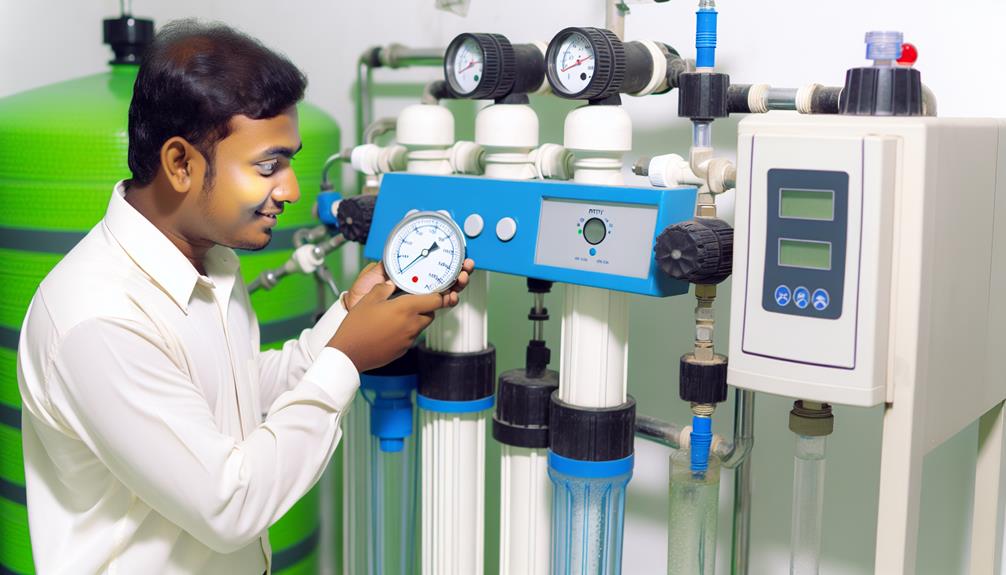
To ensure your reverse osmosis system operates at peak efficiency, periodically evaluate its performance by measuring water pressure, flow rate, and contaminant rejection ratios. Conducting an efficiency analysis of these performance metrics will help you understand if the system is functioning optimally or if it requires attention. Remember, a drop in water pressure or flow rate can indicate clogged filters or membranes, while a decrease in contaminant rejection ratios may suggest compromised membrane integrity.
Here's a table that can guide you through the crucial performance metrics:
| Performance Metric | Desired Outcome |
|---|---|
| Water Pressure | Consistent with specifications |
| Flow Rate | No significant decline |
| Contaminant Rejection Ratios | High & stable percentages |
| TDS (Total Dissolved Solids) Levels | As low as possible |
| Membrane Integrity | No breaches or deterioration |
When analyzing these metrics, it's imperative to compare them against the manufacturer's benchmarks. A deviation from these standards could evoke concern, signaling the need for maintenance or replacement of parts. Regular monitoring and swift action can save you from the emotional stress of system failure and ensure a continuous supply of pure water.
Conclusion
Maintaining your reverse osmosis system ensures peak performance and longevity.
Stick to a regular filter replacement schedule to avoid contaminants seeping through.
Don't forget to sanitize the system annually, as this prevents bacterial buildup.
Vigilantly check for leaks or damage, addressing any issues promptly to prevent water waste or system failure.
Regularly evaluate your system's performance, fine-tuning as necessary to guarantee the purest water.
Diligent maintenance is key to your system's efficacy and durability.
